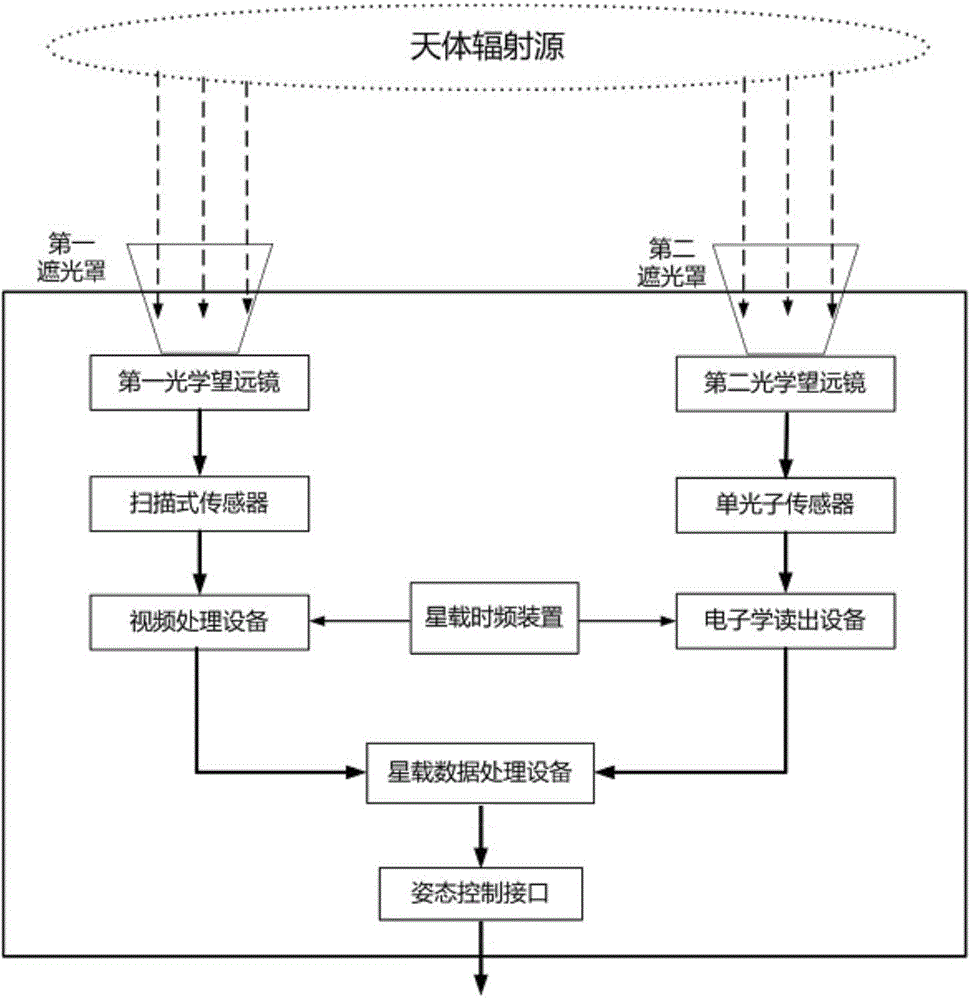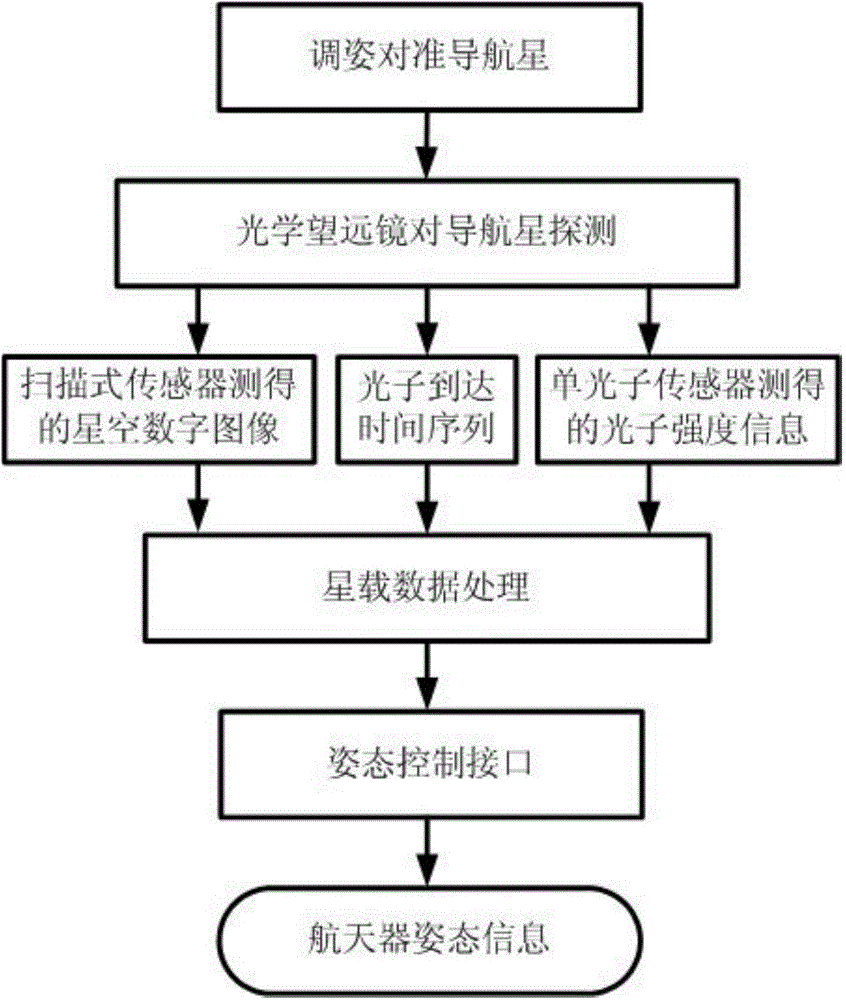Intensity-correlation star sensor
An intensity correlation and star sensor technology, applied in the field of star sensors, can solve problems such as complex single star recognition and attitude calculation, limited stability of image resolution tube simulation, large mass and volume of star sensors, etc., and achieve fast detection speed , easy engineering implementation, and improved detection sensitivity
- Summary
- Abstract
- Description
- Claims
- Application Information
AI Technical Summary
Problems solved by technology
Method used
Image
Examples
Embodiment Construction
[0018] In the following, the intensity-associated star sensor according to the present invention will be described in further detail with reference to the drawings and specific embodiments.
[0019] Such as figure 1 As shown, the intensity-related star sensor according to the present invention includes a first light shield, a second light shield, a first optical telescope, a second optical telescope, a scanning sensor, a single photon sensor, an electronic readout device, and a video processing device , On-board time-frequency device, on-board data processing equipment, and attitude control interface.
[0020] The first light shield and the second light shield are respectively installed in front of the first optical telescope and the second optical telescope to block stray light from non-target stars (for example, the sun, moon, and earth), so as to greatly reduce the amount of light entering the optical telescope. Noise: The first optical telescope and the second optical telescope...
PUM
 Login to View More
Login to View More Abstract
Description
Claims
Application Information
 Login to View More
Login to View More - R&D
- Intellectual Property
- Life Sciences
- Materials
- Tech Scout
- Unparalleled Data Quality
- Higher Quality Content
- 60% Fewer Hallucinations
Browse by: Latest US Patents, China's latest patents, Technical Efficacy Thesaurus, Application Domain, Technology Topic, Popular Technical Reports.
© 2025 PatSnap. All rights reserved.Legal|Privacy policy|Modern Slavery Act Transparency Statement|Sitemap|About US| Contact US: help@patsnap.com


